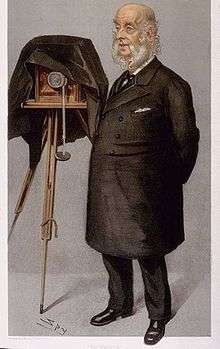John Benjamin Stone


Sir John Benjamin Stone (9 February 1838 – 2 July 1914), known as Benjamin, was a British Conservative politician, and noted photographer.
Life and career
Stone was born in Aston, Birmingham the son of a local glass manufacturer. He succeeded to the business on the death of his father.
He was a local Conservative politician, founder of the Birmingham Conservative Association and MP for Birmingham East from 1895 to 1909. He was a member of the Sutton Coldfield Corporation for many years and was the first Mayor of the town in 1886 when the new Municipal Corporation was created; a post he held for four years. He was knighted in 1892 and was appointed High Steward of the Royal Town of Sutton Coldfield in 1902.
He was also a prolific amateur documentary photographer who travelled widely in pursuit of his hobby. He made 26,000 photographs and wrote books as he travelled to Spain, Norway, Japan and Brazil. Amongst his published works were A Summer Holiday in Spain (1873), Children of Norway (1882), and a fairy tale called The Traveller's Joy. He also made an invaluable record of the folk customs and traditions of the British Isles, which influenced later photographers of note, including Homer Sykes, Daniel Meadows, Anna Fox and Tony Ray-Jones. Stone wrote of his purpose as being "to portray for the benefit of future generations the manners and customs, the festivals and pageants, the historic places and places of our times."[1]
Stone travelled with a scientific expedition to northern Brazil to see the 1893 total solar eclipse.[2][3] Notable images taken by Stone include those of the deposition of governor José Clarindo de Queirós of the then province of Ceará in Brazil, in which he prevented the rebels from firing at the governor's palace until he had taken photographs of them beside their guns.
The Benjamin Stone Photographic Collection housed in the Library of Birmingham contains many thousands of examples of his work.[4] In 1897 he founded the National Photographic Record Association, of which he became president. The National Portrait Gallery holds 62 of his portraits and many photographs of people and places in and around Westminster. His amateur career culminated in 1911 with his appointment as official photographer to the coronation of King George V.
He became president of the Birmingham Photographic Society, a Justice of the Peace, and a member of the Society of Antiquaries and of the Geological Society. He was admitted as an honorary member of the Clothworkers' Company in February 1902.[5]
Stone died at his home, The Grange in Erdington, on 2 July 1914. His wife of nearly fifty years died on 5 July, just three days later. They were buried together in a double funeral in Sutton Coldfield on 7 July 1914.
_Benjamin_Stone.jpg)
References
- ↑ Quoted in Douglas B. Graham (production editor), Documentary Photography, Time-Life Books, 1974, p. 23
- ↑ "In pictures: A journey through 19th Century Brazil". BBC News. 2 October 2014. Retrieved 2 October 2014.
- ↑ "Exhibition of photographs from 1893 eclipse expedition to Brazil". Royal Astronomical Society. Retrieved 2 October 2014.
- ↑ "The Benjamin Stone Photographic Collection". Library of Birmingham. Retrieved 2 October 2014.
- ↑ "Court circular". The Times (36689). London. 12 February 1902. p. 9.
Further reading
| Wikimedia Commons has media related to John Benjamin Stone. |
- Elizabeth Edwards, Peter James and Martin Barnes. A Record of England: Sir Benjamin Stone and the National Photographic Record Association 1897-1910. Stockport: Dewi Lewis in association with V&A Publications, 2006. ISBN 978-1-904587-37-8
- Colin Ford. Sir Benjamin Stone, 1838-1914 & the National Photographic Record Association. London: National Portrait Gallery, 1974.
- Bill Jay. Customs and Faces: Photographs of Sir Benjamin Stone. London: Academy Editions, 1972. ISBN 0-902620-83-5
- Douglas V. Jones. The Royal Town of Sutton Coldfield: a Commemorative History. Sutton Coldfield: Westwood Press, 1994. ISBN 0-9502636-7-2
- Sir Benjamin Stone's Pictures, Volume 1: Festivals, Ceremonies and Customs. 1906, re-issued 1951.
External links
- Hansard 1803–2005: contributions in Parliament by Sir John Stone
- Portraits of Sir John Stone at the National Portrait Gallery, London

- Robert Leggat Photography History
- Birmingham.gov.uk Biography of John Benjamin Stone
- "Festivals, Ceremonies & Customs: Sir Benjamin Stone & the National Photographic Record Association". Victoria and Albert Museum. Retrieved 2007-06-04.
- Works held by the Victoria and Albert Museum
| Parliament of the United Kingdom | ||
|---|---|---|
| Preceded by Henry Matthews, 1st Viscount Llandaff |
Member of Parliament for Birmingham East 1895–Jan. 1910 |
Succeeded by Arthur Steel-Maitland |
| Party political offices | ||
| Preceded by Arthur Hugh Smith-Barry |
Chairman of the National Union of Conservative and Constitutional Associations 1898 |
Succeeded by Gerald Walter Erskine Loder |
